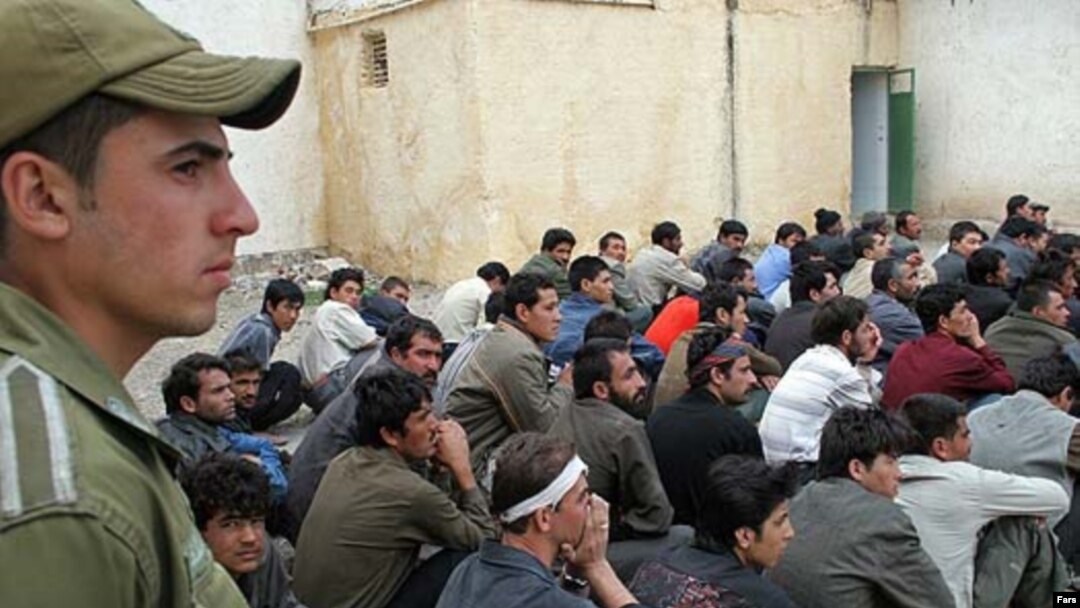KABUL (Reuters) -- People smugglers are thriving on both sides of the Afghan-Iranian border, a United Nations report has said, running operations that are costing some $200 million a year in lost visa revenue.
Since 2002, 858,000 Afghans have voluntarily returned home from Iran, despite wage levels in Iran that are four times higher than in Afghanistan, the UN said. Around 1 million Afghan refugees still live in Iran.
The report, funded by the United Nations High Commissioner for Refugees (UNHCR) and the International Labor Organization (ILO), found that almost 80 percent of returning Afghans questioned in a survey had paid a smuggler to get them to Iran.
"A thriving smuggling network supports an irregular labor migration flow to Iran.... This network has thrived despite restrictive policies put in place by the government of Iran," Nassim Majidi, the report's project manager, told a news conference.
"What was very interesting to us was that the smugglers were on both sides of the border," Majidi said. Most smugglers were working from Nimroz in southwestern Afghanistan, but were cooperating with colleagues in Iran, he said.
It costs Afghan migrants around $360 to hire a smuggler to traffic them into Iran, compared with the $740 price tag for a visa to Iran, the UN-ILO report said, earning the smugglers some $94 million a year.
"Smugglers do not create migration, it's the need of migration that creates the business.... I think we can fully understand people are looking to find jobs to support their families," Marc Vansteenkiste, chief technical adviser of the ILO, told the news conference.
The report, which questioned 784 Afghans in four provinces who had returned from Iran since 2002, also noted the impact Afghan migrants in Iran have on their home economy through remittances.
It estimated that $500 million worth of remittances from Afghans working illegally in Iran, 98 percent of whom are men, are sent back to their families in Afghanistan each year, equivalent to 6 percent of the country's GDP.
Vansteenkiste said talks were under way with countries such as South Korea, Qatar, and the United Arab Emirates to take unemployed, semi-skilled or skilled Afghan men to work in the construction industry.
Since 2002, 858,000 Afghans have voluntarily returned home from Iran, despite wage levels in Iran that are four times higher than in Afghanistan, the UN said. Around 1 million Afghan refugees still live in Iran.
The report, funded by the United Nations High Commissioner for Refugees (UNHCR) and the International Labor Organization (ILO), found that almost 80 percent of returning Afghans questioned in a survey had paid a smuggler to get them to Iran.
"A thriving smuggling network supports an irregular labor migration flow to Iran.... This network has thrived despite restrictive policies put in place by the government of Iran," Nassim Majidi, the report's project manager, told a news conference.
"What was very interesting to us was that the smugglers were on both sides of the border," Majidi said. Most smugglers were working from Nimroz in southwestern Afghanistan, but were cooperating with colleagues in Iran, he said.
It costs Afghan migrants around $360 to hire a smuggler to traffic them into Iran, compared with the $740 price tag for a visa to Iran, the UN-ILO report said, earning the smugglers some $94 million a year.
"Smugglers do not create migration, it's the need of migration that creates the business.... I think we can fully understand people are looking to find jobs to support their families," Marc Vansteenkiste, chief technical adviser of the ILO, told the news conference.
The report, which questioned 784 Afghans in four provinces who had returned from Iran since 2002, also noted the impact Afghan migrants in Iran have on their home economy through remittances.
It estimated that $500 million worth of remittances from Afghans working illegally in Iran, 98 percent of whom are men, are sent back to their families in Afghanistan each year, equivalent to 6 percent of the country's GDP.
Vansteenkiste said talks were under way with countries such as South Korea, Qatar, and the United Arab Emirates to take unemployed, semi-skilled or skilled Afghan men to work in the construction industry.


